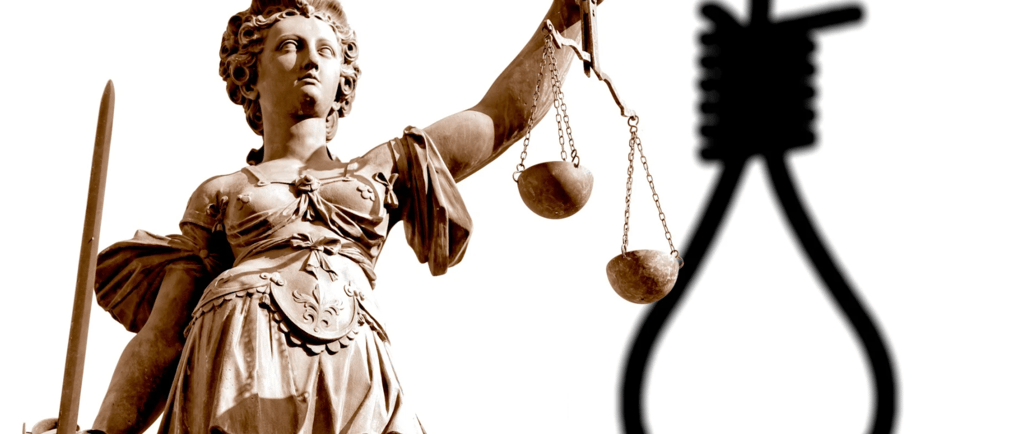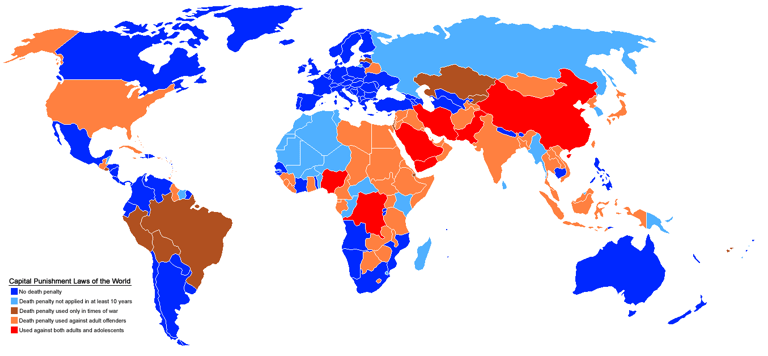Understanding the Death Penalty: A Global Perspective
An in-depth look at the diverse approaches and methods used by countries around the world regarding capital punishment.
8/16/20244 min read


The Complex Reality of the Death Penalty Around the World
The death penalty is a deeply divisive and controversial issue. Many people have strong feelings about it, whether for or against. However, the reality of having the death penalty on the books is not as straightforward as it might initially seem. The topic is far more complex, involving a variety of laws, regulations, and practices that vary significantly from one country to another. In this blog post, we'll explore the different categories of countries based on their stance on the death penalty, the methods used, and the execution of juveniles. Let’s dive into the nuances of this contentious topic.
Abolitionist Countries
Definition and Historical Context:
Abolitionist countries are those that have legally prohibited the use of the death penalty. Currently, there are 114 such countries, where capital punishment is not allowed by law. The movement to abolish the death penalty began in the 19th century, with countries like Venezuela, Portugal, San Marino, and Costa Rica leading the way.
Notable Milestones:
In the first half of the 20th century, Panama, Ecuador, Uruguay, Colombia, Iceland, and Germany also abolished the death penalty.
Vatican City eliminated it in 1969, despite no executions occurring since its implementation in 1929.
Australia officially abolished the death penalty in 1985, with the last execution happening in 1967.
After the collapse of the Soviet Union in the 1990s, many former Soviet countries quickly removed the death penalty from their legal systems.
The European Union Stance:
The abolition of the death penalty is a prerequisite for joining the European Union, reflecting a broader global trend toward eliminating this form of punishment.
Retentionist Countries
Current Statistics:
Retentionist countries are those that retain the death penalty by law and actively use it to some extent. There are currently 56 such countries. In 2023, the countries with the highest number of executions were China, Iran, Saudi Arabia, Somalia, and the USA, in that order.
Execution Numbers:
China executed at least 1,153 people in 2023, though actual numbers are likely higher as they are considered a state secret.
Iran reported 853 confirmed executions, with actual numbers possibly higher.
Saudi Arabia had 172 executions.
Somalia executed 38 people.
The USA executed 24 people, but it currently has 2,241 individuals on death row.
Experts categorize retentionist countries into three broad groups:
High Execution Rates: Countries like China, Iran, Saudi Arabia, and North Korea use the death penalty to eliminate dissent and maintain control, often for political reasons rather than solely criminal offenses.
Moderate Execution Rates: The USA is a prominent example where the death penalty is used as a punitive measure, reflecting a focus on retribution rather than addressing underlying social issues.
Low Execution Rates: Many countries retain the death penalty but use it sparingly, typically reserved for the most severe cases. India, for instance, has executed individuals in extreme cases, such as terrorism and serial killings.
Mid-Way Countries
Some countries fall into a grey area regarding the death penalty. These include:
Light Grey Countries: There are nine countries where the death penalty is retained only for extraordinary, serious crimes, such as those committed during war.
Dark Grey Countries: Twenty-three countries have the death penalty legally available but have not executed anyone in at least ten years. Many of these countries are in the process of abolishing the death penalty altogether, but the legislative process takes time.
Current Methods of Execution
Methods Used in Different Countries:
The methods of execution vary across different countries, particularly among those with high execution rates:
China: Uses lethal injection and firing squads.
Iran: Legal methods include hanging, stoning, firing squad, and dropping from heights, though hanging is the most common.
Saudi Arabia: Executes by firing squad or beheading by sword, with beheading being more prevalent.
Somalia: Due to its lack of stable government, non-state militants often enforce the death penalty, with methods including stoning, beheading, and firing squad, although the firing squad is most commonly used.
USA: The federal government, military, and 27 states have the death penalty on the books, with various methods available. Lethal injection is the most commonly used method, but some states also permit the use of the firing squad, lethal gas, hanging, and electrocution.
Juvenile Executions
International Human Rights Law:
According to Amnesty International, "The use of the death penalty for crimes committed by people younger than 18 is prohibited under international human rights law." However, several countries have ignored this guideline and have sentenced juveniles to death since 1990.
Countries and Cases:
The USA has sentenced 19 juveniles to death since 1990, though none were executed while still under 18 due to the lengthy appeals process.
Saudi Arabia and Yemen both executed 13-year-olds in 1993, and the Congo executed a 14-year-old in 2000.
Watch our full video to explore these complexities further
Conclusion
Understanding the global stance on the death penalty requires looking beyond the binary of abolitionist versus retentionist. The nuances of each country's laws, cultural norms, and governmental structures play a significant role in shaping their approach to this issue. As we have seen, the application and methods of execution vary widely, and the debate continues in many regions.
Book an online consultation below. Remember, it's never too early to talk about death.





